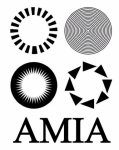Wisconsin Nitrate Film Project
Background & Objectives
In the fall of 2013, the conservation and history groups created a survey to examine the gap between prescriptive regulations and actual practice among archives holding nitrate film collections.
We developed questionnaires (available here) that focused on determining:
- the type of archival institution
- the size of the nitrate collection at that institution
- the institution’s day–to–day practices for nitrate storage, handling, and shipping
- the knowledge or experience of nitrate held by that institution’s personnel.
Our questions took into account both prescribed practices (such as the use of NFPA 40-complaint vaults for long term storage of nitrate film) and archival practices that are not accounted for in cellulose nitrate-related regulations, but that are commonly employed as preservation methods (such as the use of freezers for long term storage of film based materials).
In particular, we wanted to learn about:
- awareness of and adherence to regulations put forth by the National Fire Protection Association (NFPA), which deals with life safety issues related to the storage and use of nitrate film
- health and safety issues for workers dealing with deteriorating film, which are potentially subject to Occupational Health and Safety (OSHA) regulations
- transportation and shipping regulations, which are governed by the U.S Department of Transportation (DOT) for ground transport and by the International Air Transport Association (IATA) for air transport
- hazardous materials disposal of nitrate film, which are regulated by the U.S. Environmental Protection Agency (EPA)
Survey Methods & Populations
The regulations governing cellulose nitrate can be difficult and costly for archives to meet. In some cases, they even be pragmatically impossible for an archive to achieve. Because of this, we sought information about the levels of awareness and regulatory compliance in two distinct types of archive.
 First, we surveyed specialty motion picture archives which have an emphasis on nitrate film preservation, and which presumably represent an experienced nitrate user group. This constituent population was represented by the members of the Nitrate Committee of the Association of Moving Image Archivists (AMIA).
First, we surveyed specialty motion picture archives which have an emphasis on nitrate film preservation, and which presumably represent an experienced nitrate user group. This constituent population was represented by the members of the Nitrate Committee of the Association of Moving Image Archivists (AMIA).
- The AMIA survey was conducted through the University of Wisconsin’s Qualtrics survey hosting service, and an invitation to participate was disseminated to members of the Nitrate Committee through use of their listerv, which has about 100 members. Membership on the committee is open to all interested members of the larger AMIA association, which includes archivists, individual collectors, historians, and filmmakers.
- We sought and received responses to the survey through this committee at the institutional level (i.e., one survey represents one film archive), but the total number of institutions represented by the committee is unknown.
- We received 15 responses from members of AMIA.
 Second, we surveyed U.S. state government and territorial archives, which may hold some nitrate film motion pictures or photographic negatives within their larger collections of government records. Presumably, these institutions may have fewer resources to devote to the special concerns of nitrate film. This constituent population was represented by members of the Council of State Archivists (CoSA).
Second, we surveyed U.S. state government and territorial archives, which may hold some nitrate film motion pictures or photographic negatives within their larger collections of government records. Presumably, these institutions may have fewer resources to devote to the special concerns of nitrate film. This constituent population was represented by members of the Council of State Archivists (CoSA).
- The Council of State Archivists has 56 members, each representing one U.S. State or Territorial archive. The survey questionnaire was distributed by email to each member by CoSA executive director, Anne Ackerson, who tabulated the raw data into an excel spreadsheet.
- We received 21 responses from members of CoSA.
A list of the respondents from the two constituencies, with identities redacted, can be found here.
While we have made some preliminary inferences based on the survey data, and have for pragmatic reasons drawn comparisons between the two populations in our discussion of the results, the caveat must be made that a larger population and more rigorous methodology must be employed before statistically significant conclusions can be drawn.
Importantly, though, our results did highlight the different levels of experience and knowledge between these two groups, and suggest that the non-specialist archival community represented by CoSA would particularly benefit from educational and funding opportunities to assist in caring for their nitrate holdings.
The full results of our survey can be found here.
